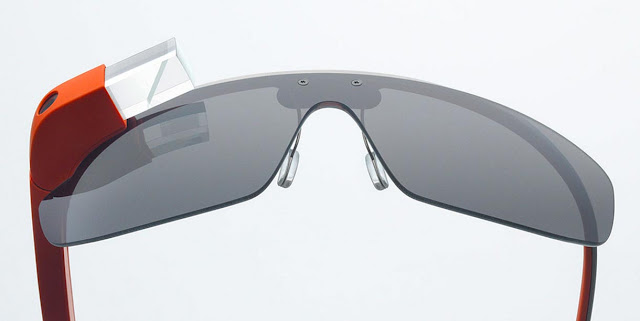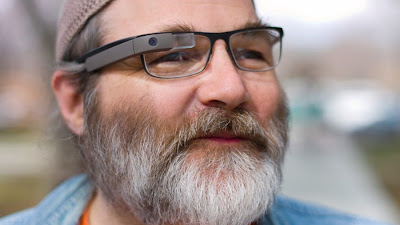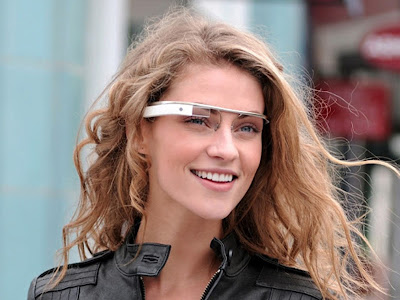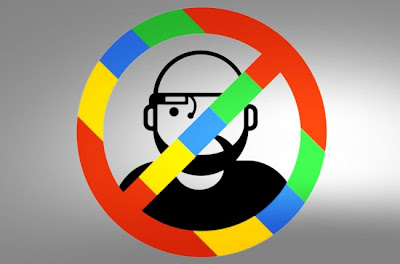A few days ago, you may have read our post regarding the new product from Google, Glass. It has come and we got to see it in action. The real question here is, whether anyone should really be excited about this augmented reality goggles from Google. Let’s find out.
Google Glass has been the focus of attention in the technology world for the last couple of months. One of the first things that anyone would ask about Glass is whether it is stylish enough to be worn outside or would it make you look dorky? This is difficult to find out as the product has not reached our hands yet. Only a few people have had the opportunity to wear Glass and get out. EIC of Engadget, Tim Stevens was one of the first to experience Google Glass, and he has written in detail about it. His review points out “A heads-up display seems like a natural fit”.
In comparison to your smartphones, Google Glass does seem easier to use. It does look stylish upon your regular eyeglasses. You may have noticed the spoof picture of the duke of Cambridge, Prince William and his better half Kate Middleton wearing Google Glass, in our earlier review.
The first of the explorers of Google Glass project included a few celebrities, including How I Met Your Mother star, Neil Patrick Harris. If you remember, Neil did post a tweet mentioning he would show the world the sets of HIMYM if he had Glass. He has been given an opportunity. Check this out:
That would be legen... wait for it... dary. RT @actuallynph I’d show what it’s like to act on the set of HIMYM all day! #ifihadglass
— Project Glass (@projectglass) February 20, 2013
Other celebrities that got the opportunity include actor and singer Brandy Norwood, actor Kevin Smith, rapper Soulja Boy, singer Imogen Heap, O’Reilly founder Tim O’Reilly, etc. Get an extensive list here (people selected via Twitter).
One point that I wish to discuss with you is why Google Glass gets so much media attention. A factor behind this is the enormous popularity of the search giant. Anything that comes from Google is gold for the media. That explains the extreme media coverage of Google Glass. On the other hand, have there not been any other augmented reality eyeglasses in the past? There have, of course. One of them is EyeTap, which was also talked about in our article on Glass. But those other inventions are more cumbersome-looking than Glass, and hence they have not been quite popular.
In fact, these wearable computing products have been around since the 80’s.
Just as any other product, Google Glass also has its own advantages and disadvantages. The success of a product depends on whether it has more advantages than disadvantages, of course. Let’s analyze this.
1. Google Glass and the Usability Factor
Whether or not Glass is an easy-to-use device is subjective at best. Many reviews that I went through talked about how easy to use this particular product is. Many others talked about the difficulty of using it. You just wear it and simply give orders to it to take pictures, search the Internet, etc. If you are familiar with Google’s and Apple’s voice command systems, you should be able to use Glass comfortably.
With that said, the voice recognition system is still far from perfect. If you are in a crowd and you are trying to use the voice command system, it more or less doesn’t recognize what you speak. Also, the system has big trouble with non-native speakers. Since voice is the prime way of entering input, you will either get the hang of it or will get bored with its ineptitude.
2. The Battery
Google Glass is notorious in the battery department. Many people have found out it has a terrible battery. No smartphone has a battery that runs for only three or four hours as in the case of Google Glass. If you think deep, this is a huge disadvantage of Glass.
3. The Screen
The tiny screen of Glass is integrated to a thick glass block that goes on top of the device. The problem is the display is more or less transparent and difficult to see in bright daylight. Yet, the device is meant to be used outside where there is bright daylight almost always: another disappointing aspect of Glass.
4. The Specifications
Google Glass specs are out. The details of the display are not available although it has been verified to be equivalent to a 25 inch HD screen about 8 feet away.
Camera: 5 MP 720p; Storage: 16 GB with 12 GB available; RAM: 1 GB (developers get 682 MB); Wi-Fi: 802.11 b/g and BlueTooth; OS: requires Android ICS 4.0.3 for MyGlass app. In essence, its specs do not compare to a product of the current era. Wi-Fi could have been b/g/n in order to have better speed.
4. The Price
Although it was mentioned in the initial stages of development of Glass that the product would be priced like a regular smartphone, it is not. For such a low-spec device that has to be paired with a smartphone to even work outside, Glass is priced too high. 1500 dollars for Glass is asking too much.
Google uses Foxconn’s facilities in Santa Clara, California to manufacture Glass. Just as Apple is investing over 100 million in manufacturing products in the US, Google is also moving that way. The higher manufacturing cost in the United States is another reason why Google Glass is priced so high.
Google Glass’s production in California will only be a few thousand units, and that will be rolled out to the first few people to use Glass including the Glass Explorers.
In the future, when Glass will be made available to the general population, we expect the price to come down drastically.
Banning the Glassholes
As soon as Glass became a household topic of conversation, the term Glasshole started to appear to describe the people wearing Glass and encroaching on others’ privacy. The Urban Dictionary also provides the definition as a person who constantly talks to his Google Glass.
Glass has been banned in a number of places, including casinos, strip clubs, movie theaters, 5 Point Café in Seattle Washington, while driving in West Virginia, etc. There are a number of reasons behind banning Google Glass in these scenarios. For instance, security is absolutely necessary in casinos and movie theaters due to such issues as game rigging and bootlegging. Strip clubs probably don’t want you to create videos of performances! These wearable computers may also be banned on certain government buildings including courts.
Conclusion
In essence, Google Glass is yet another wearable product that works with your smartphone. It doesn’t have any major technical specifications to command a high price. Also, there is a good chance that people will forget about Glass after the initial buzz dies down. Google has done a great marketing technique to promote this product, but it all comes down to the usability factor.
It is very much possible that you will get bored with Glass after a few days’ use. If the use of a product is difficult, it is bound to fail. In our opinion, the only way any voice-activated product can become popular is by making the voice recognition system perfect. Since that is not the case, we expect Google Glass not to make any big impact in our lives.
[Image: TechRadar, DigitalTrends]



